 Image search results - "showa" Image search results - "showa" |

One of two giant kitesThis festival has two giant kites and two smaller (but still large) kites. Resting on its side, the kite was scheduled to fly at 2 pm. The kanji characters read "Michi no Eki" in reference to a new train station built in the town.
|
|
|
|

Lowering the kite
|
|
|
|
|

Patch up
|
|
|

Moving the kite to launch point
|
|

Festival siteThey did not allow people go enter the launch area at all times. Spectators were kept far away.
|
|
|

No people on the sides either
|
|

Launch point on a low hill
|
|
|
|

Ride'em cowboyAs the kite quickly flew up, the forward kite pullers had to release the rope.
|
|
|
|
|
|

Michi no EkiThe kite design is the same every year, but the kanji characters change. They make a new giant kite every year.
|
|
|
|
|
|
|

Smaller kite "Yujo"
|
|
|
|

"Yujo"This is a smaller kite. It means "Friendship."
|
|
|
|
|
|
|
|
|

She fell
|
|

Patch up
|
|
|
|
|

"Nakama"This is another smaller kite. It means "Circle of Friends."
|
|

Anchor truck
|
|

Amateur areaFurther downwind was the amateur area for flying normal kites.
|
|

Another launch
|
|
|
|

Another beautiful take off
|
|
|
|
|
|
|
|
|

Poster
|
|

Giant Kite MuseumLocated a short walk from the kite festival site. This is also where you can catch the bus back to Kasukabe Station.
|
|

Older giant kite "Odako"The museum displays giant kites from previous years. Usually the giant kites are destroyed after the festival. But a few of them have been preserved here. The kanji means "Giant Kite."
|
|
|
|
|

Smaller kitesThe museum displays many different kites from all over Japan and other countries.
|
|
|

Museum floorThis is where they make the giant kites during Feb. to April.
|
|

Road to Showa-Shinzan. That's the Showa-Shinzan Youth Hostel on the right. Best way to get to Showa-Shinzan is by bus from Toyako Onsen bus terminal.
|
|

Buses from Toyako Onsen don't run very often, so check the bus timetable beforehand. I opted to rent a bicycle and rode to Showa-Shinzan. Unless you like to push a bicycle up a very long slope for about 30 min., take a bus.
|
|

Distance-wise, Showa-Shinzan is not very far. But the killer slope will get you... At least the return bike ride was a thrill and very quick.
|
|

After a long walk uphill with a bicycle, Showa-Shinzan is in sight. Showa-Shinzan is in the town of Sobetsu.
|
|

There's a large parking lot full of tourists.
|
|

Mt. Showa-Shinzan is a lava dome which arose in the middle of farm land in 1943-45. Lake Toya, Hokkaido.
|
|

We cannot climb Showa-Shinzan.
|
|

The closest we can go is this park at the foot.
|
|

Statue of Masao Mimatsu, a post office worker who observed and documented the development of Showa-Shinzan. His records are valuable.
|
|

Statue of Masao Mimatsu.
|
|

Park at the foot of Showa-Shinzan which means "New Mountain of the Showa Period." Showa-Shinzan is adjacent to Mt. Usu.
|
|

A tourist village called Kazan-mura (Volcano Village) has developed at the foot of Showa-Shinzan. 火山村
|
|

Mt. Usu is on the left, Showa-Shinzan on the right. In the background is the conical Mt. Yotei. Between Usu and Showa-Shinzan is the tourist village and the Usuzan Ropeway terminal.
|
|

Usuzan Ropeway terminal on the left.
|
|

Usuzan Ropeway car holds over 100 people.
|
|

Leaving the ropeway terminal.
|
|

The ropeway distance is 1370 meters. It takes only 6 min. to reach Mt. Usu. The roundtrip ropeway fare is 1,450 yen for adults, 730 yen for kids.
|
|

Showa-Shinzan gets smaller.
|
|

Usuzan Ropeway, Lake Toya.
|
|

View of Lake Toya from the ropeway car.
|
|

View of Lake Toya from the ropeway car.
|
|

Lookout deck on Mt. Usu, near the ropeway terminal.
|
|

Toyako lookout deck on Mt. Usu, near the ropeway terminal. 洞爺湖展望台
|
|

Lake Toya lookout deck on Mt. Usu, near the ropeway terminal. Showa-Shinzan clearly in sight. 洞爺湖展望台
|
|

Mt. Showa-Shinzan as seen from Mt. Usu.
|
|

Lake Toya's bald spot.
|
|

Showa-Shinzan closeup. Still steaming.
|
|
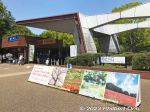
Nishi Tachikawa entrance to Showa Kinen Park. Use your Suica card or buy tickets from the vending machine. The signboard promotes the flowers currently in bloom: red poppies.
|
|

After entering the park through the Nishi-Tachikawa Entrance, you see this scene of the Waterfowl Pond and pedal boats. 水鳥の池
|
|

Pedal boats are very popular. This is the boat dock.
|
|
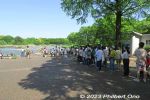
Long line to buy tickets for the pedal boats. This was during Golden Week in early May 2023.
|
|

Another long line to get on the boat.
|
|
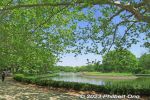
Waterfowl Pond.
|
|
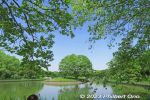
Waterfowl Pond.
|
|
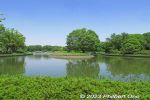
The park has multiple ponds, but this Waterfowl Pond is the largest one.
|
|
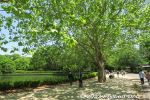
Lots of large trees for shade.
|
|

Long line to rent a bicycle at Nishi-Tachikawa Cycle Center. Only ¥600 for 3 hours. 西立川口サイクルセンター
|
|
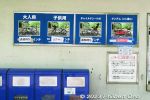
Types of bicycles available for rent. But all gone. Long wait.
|
|
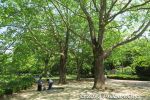
More large trees.
|
|
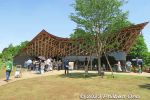
Oka Cafe built with wood from the Tama Region of Tokyo. オカカフェ
|
|

Since it was a sunny day, many people brought their own tents and stayed under the tree shade.
|
|

Long lines at most refreshment stands. This one was for snow cones.
|
|
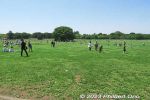
Center of the park is this large lawn where people can play. Called "Minna no Harappa" or Field for All. みんなの原っぱ
|
|
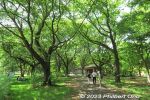
The large field is lined with shady trees along the fringe. Most must be cherry blossoms.
|
|
|

The park is fringed with a tree-lined walking path.
|
|
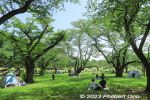
Pleasant place to be with all the trees and greenery. Wise decision to convert the former Tachikawa US Air Force Base into this park.
|
|
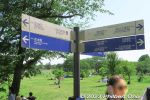
Directional signs in English.
|
|

Rental bicycles are popular to get around the large park.
|
|
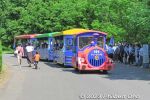
Train-shaped bus to get around the park.
|
|
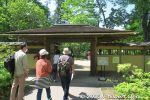
Entrance to the Japanese Garden.
|
|

Map of Japanese garden at Showa Kinen Park. The Japanese garden is a 20-min. walk from the Nishi Tachikawa park entrance. That's how big the park is.
|
|
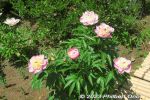
Peonies
|
|
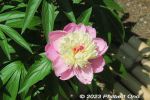
Peony
|
|
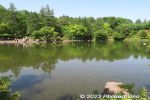
Japanese garden at Showa Kinen Park.
|
|
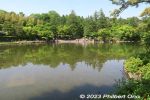
Showa Kinen Park's Japanese garden.
|
|

Showa Kinen Park's Japanese garden.
|
|
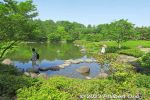
Showa Kinen Park's Japanese garden.
|
|
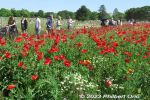
Red poppy field on the western fringe of the large field. Called the Bouquet Garden. ブーケガーデン
|
|
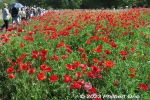
The field of red poppies has a walking path in the middle. Poppy field is much bigger than it looks.
|
|

The field of red Shirley poppies at Showa Kinen Park. シャーレーポピー
|
|
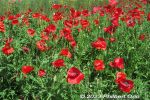
The field of red poppies at Showa Kinen Park.
|
|
|
|
|

Bouquet Garden has poppies mixed in with other flowers blooming in May. Perfect to make a bouquet, but we're not allowed to pick the flowers. シャーレーポピー
|
|
|
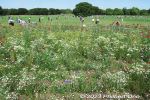
Pretty flowers.
|
|
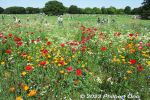
Other flowers in the mix include dianthus and delphinium.
|
|
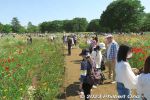
Path through the Bouquet Garden's poppies and other flowers.
|
|

More red poppies.
|
|
|
|
|
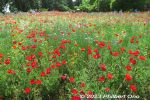
The field of red poppies at Showa Kinen Park.
|
|
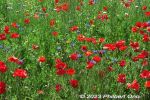
The field of red poppies at Showa Kinen Park.
|
|
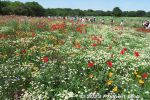
Bouquet Garden's poppies and other flowers at Showa Kinen Park.
|
|
|
|
|
|

Nemophila (baby blue eyes). There's more on a large slope elsewhere in the park.
|
|

Closeup of nemophila (baby blue eyes)
|
|
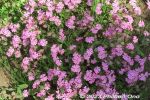
Moss pink
|
|
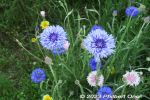
Cornflowers
|
|
|
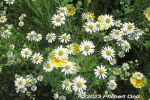
Reminds me of artist Murakami Takashi.
|
|
|
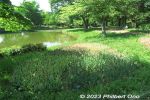
Patches of tulips already finished blooming. Must've been colorful from late March to mid-April.
|
|
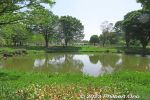
Across this pond was a crowd ogling baby blue eyes.
|
|
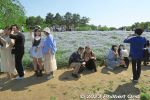
Showa Kinen Park also has a large slope with nemophila (baby blue eyes). Crowd favorite.
|
|
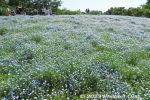
Nemophila (baby blue eyes) at Showa Kinen Park, Tachikawa, Tokyo.
|
|
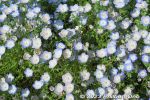
Nemophila (baby blue eyes)
|
|

JR Nishi-Tachikawa Station, the closest train station to the park. A bridge connects the station to the park entrance.
|
|

Nishi Tachikawa park entrance (admission charged). The following photos were taken during cherry blossom season.
|
|

Waterfowl Pond and boats. Grass is still dry and not green in April.
|
|

Boat pier
|
|

Oiutdoor cafe near the boat house.
|
|

Putter golf course
|
|

Transportation
|
|

The large field named "Minna no Harappa" or Field for All. みんなの原っぱ
|
|

Cherry blossoms
|
|

Cherry blossoms bloom from late March to mid-April.
|
|

Cherry blossoms
|
|
|
|

Japanese Garden 日本庭園
|
|

Bonsai exhibition
|
|

Bonsai exhibition
|
|

Cherry blossoms
|
|

Water Fountain
|
|

Katarai Promenade and canal
|
|
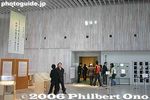
Emperor Showa Memorial Museum within Hana-midori Bunka Center. One-room museum with various exhibits on Emperor Showa (Hirohito). His marine biology lab is reproduced, a horse-drawn carriage, videos, etc., are shown. 昭和天皇記念館
|
|
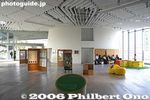
Inside Hana-midori Bunka Center
|
|
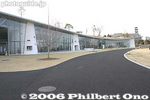
Hana-midori Bunka Center
|
|

Mt. Showa-Shinzan as seen from Lake Toya.
|
|
|
|
|
|